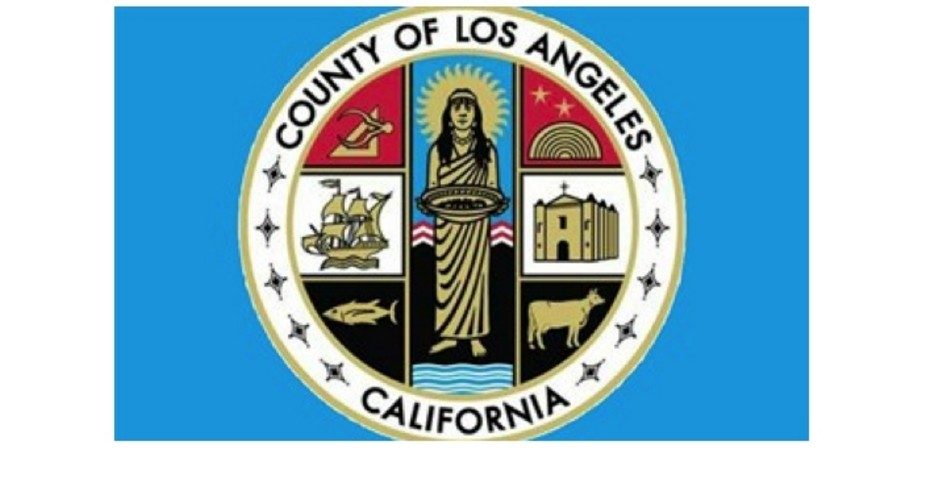
In a ruling released on April 7, Judge Christina A. Snyder of the U.S. District Court for the Central District of California stated that a representation of the historic San Gabriel Mission topped by a tiny cross that was included in the Los Angeles County seal violated the Establishment Clause of the First Amendment, asserting that a “reasonable, objective observer” would see a sectarian purpose in having the cross on the seal, regardless of the official explanation.
The First Amendment prohibits Congress from enacting a law “respecting an establish of religion.”
In her ruling, Snyder wrote:
[The addition of the cross to the seal] carries with it an aura of prestige, authority, and approval. By singling out the cross for addition to the seal, the county necessarily lends its prestige and approval to a depiction of one faith’s sectarian imagery.
The county also provides a platform for broadcasting that imagery on county buildings, vehicles, flags, and stationary.… Permitting such a change and the associated expenditure of public funds places the county’s power, prestige, and purse behind a single religion, Christianity, without making any such benefit available on an equal basis to those with secular objectives or alternative sectarian views.
{modulepos inner_text_ad}
A cynic might be tempted to observe that the two stars representing the motion picture and television industries most certainly represent “those with secular objectives.”
When the Los Angeles County Board of supervisors adopted a new seal for the county in 1957 (to replace the 1887 seal that depicted simply a bunch of grapes) it contained a montage of illustrations depicting several things representative of the county. One of these was the Hollywood Bowl, over which was displayed “two stars representing the motion picture and television industries and the cross representing the influence of the church and missions of California.”
The latter statement is undeniable. The 44 settlers who established the original town in the area in 1781 called it “El Pueblo de Nuestra Señora la Reina de los Ángeles del Río de Porciúncula,” which translates in English to “The Town of Our Lady the Queen of the Angels of the Porciúncula River.” (The Porciúncula River is now called the Los Angeles River.) Since all religions don’t acknowledge angels, it would seem that the very name of the county (Los Angeles means “the angels”) is unconstitutional by the logic of the plaintiffs.
In 2004, after the American Civil Liberties Union (ACLU) threatened a lawsuit over the presence of a cross on the previous seal, the supervisors removed it and inserted a depiction of the San Gabriel Mission. Since the cross on the actual mission was missing at the time, because of restoration work being done on the building following an earthquake, it was omitted from the picture on the seal. In 2014, five years after the cross had been replaced on the actual mission, the board of supervisors voted to add the cross to the mission on the seal. However, the forces opposed to visible signs of Christianity in American society sprang into action.
The Los Angeles Times reported last November 12 that soon after voting to restore the cross to the seal, “the supervisors were promptly sued by a group of religious leaders and scholars from different faiths, represented by the American Civil Liberties Union of Southern California and a private law firm.”
In response to the lawsuit, Timothy T. Coates, an attorney with the firm Greines, Martin, Stein & Richland LLP, which represented Los Angeles County, said that the most significant point to consider was what a “reasonable observer” who saw the county seal would think.
Coates noted that Californians grow up learning about the historical significance of missions and would not regard a picture of a mission with a cross on top as an endorsement of religion.
“The way Californians experience missions, the way they’re taught in school is in a secular fashion,” Coates told Judge Snyder. “Californians are conditioned to view missions as historic structures.”
But Attorney Linda M. Burrow, of the firm Caldwell Leslie & Proctor, which represented the plaintiffs along with the ACLU, disputed the “assumption that because a portion of history that has a religious aspect is taught in a school, that that makes it secular.”
“When you teach, you educate. When you put something on the seal, you promote,” Burrow said. “It has the effect of advancing religion, and it was intended to do just that.”
Snyder told the lawyers last November, “I don’t think it’s a clear issue one way or the other.” However, from her recent ruling, Snyder apparently came around to the ACLU’s way of thinking.
The Times quoted a statement from former county Supervisor Zev Yaroslavsky, who had opposed reinstating the cross, praising the judge’s decision: “This is a great victory for the Constitution, for the 1st Amendment of the Constitution, for the premise that the government should not be in the religion endorsement business.”
Since Yaroslavsky’s assertion is one that is commonly used in arguments against the presence of religious symbols and practices in the public sphere — from prayer in schools to representations of the Ten Commandments in public parks — it would be worthwhile to explore the thinking of those who authored the First Amendment and consider if they had actually intended to ban all religious elements from public life in America.
What right, exactly, did the authors of the Bill of Rights intend to protect when they wrote: “Congress shall make no law respecting an establishment of religion, or prohibiting the free exercise thereof”?
History shows us that the term “establishment of religion” refers to an officially recognized church, as had been common in colonial America, as it was back in mother England, where the Church of England was the established church. The Church of England remained the officially established church in the colonies of New York, Virginia, North Carolina, South Carolina, and Georgia. Other colonies also had established churches during colonial times and levied taxes on all citizens to pay for the support of the state church. This was this sort of establishment of religion that the authors of the Bill of Rights wanted to protect Americans from.
The phrase “separation of church and state,” authored by Thomas Jefferson, is often bandied about by those who attempt to prohibit any governmental recognition of any aspect of religion, even generic manifestations of religions not unique to any particular church. Opponents of things such as prayer in public schools or Christmas displays in town squares even oppose these activities on the municipal level, though the First Amendment refers to “Congress” and not states or counties or towns. (This is another result of the way the 14th Amendment has been over-zealously interpreted to apply all of the prohibitions made against the federal government in the Bill of Rights to the states, whether the states are mentioned or not. Such interpretations basically negate states’ rights.)
Jefferson’s use of “separation of church and state” is found in his January 1, 1802 letter to the Danbury Baptist Association, in Connecticut, in which he wrote:
I contemplate with sovereign reverence that act of the whole American people which declared that their legislature should “make no law respecting an establishment of religion, or prohibiting the free exercise thereof,” thus building a wall of separation between Church & State.
Since the Church of England was the established church in Jefferson’s state of Virginia, this was the obvious model that he would envision for “an establishment of religion. However, his views against such an establishment did not extend to banning all religious activity from public institutions. When he participated in founding the University of Virginia — a state school — Jefferson encouraged all the separate religious sects to have preachers of their own. This was even though there was a constitutional ban on the state supporting a Professorship of Divinity, under his own Virginia Statute for Religious Freedom.
Until recent decades, when secularist organizations such as the ACLU and the Freedom From Religion Foundation started litigating to remove all aspects of religious life from public institutions, the First Amendment was generally interpreted as prohibiting government from establishing an official church or allowing government to support a church, but otherwise allowing all religions equal access to the “public square.”
Our Founding Fathers, the very people who authored our Constitution and Bill of rights, were largely religious men who would have been amazed to learn that future generations would try to use the First Amendment to ban all references to religion from public institutions. The absurdity of such a view is made evident when we consider that both the House of Representatives and the Senate have a chaplain who opens each session of their body with a prayer.
Even a brief review of quotes made by some of our Founders indicates how highly they regarded spirituality. A few examples include:
• “God who gave us life gave us liberty. And can the liberties of a nation be thought secure when we have removed their only firm basis, a conviction in the minds of the people that these liberties are of the Gift of God?” — Thomas Jefferson
• “Here is my Creed. I believe in one God, the Creator of the Universe. That He governs it by His Providence. That He ought to be worshipped.” — Benjamin Franklin
• “The hope of a Christian is inseparable from his faith. Whoever believes in the divine inspiration of the Holy Scriptures must hope that the religion of Jesus shall prevail throughout the earth.” — John Quincy Adams
• “It cannot be emphasized too strongly or too often that this great nation was founded, not by religionists, but by Christians; not on religions, but on the gospel of Jesus Christ. For this very reason peoples of other faiths have been afforded asylum, prosperity, and freedom of worship here.” — Patrick Henry
• “While we are zealously performing the duties of good citizens and soldiers, we certainly ought not to be inattentive to the higher duties of religion. To the distinguished character of Patriot, it should be our highest glory to add the more distinguished character of Christian.” — George Washington
Related articles:
CT High School Removes “Our Lord” Reference from Diplomas
Okla. Gov. Defies State Court Order to Remove 10 Commandments Monument
Judge: New Mexico 10 Commandments Monument Unconstitutional
Federal Courts Rule Against ACLU in Ten Commandments Cases
Pennsylvania Ten Commandments Monument Latest Target of Atheist Group
Pa. School Battles Atheist Group Over Ten Commandments Display



